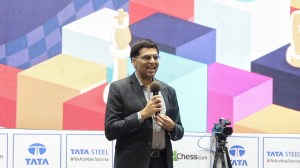Stay updated with the latest - Click here to follow us on Instagram
No lip service
When Sonam Kapoor danced to Masakalli sung by Mohit Chauhan in Delhi-6 one wondered why a female voice wasnt used in the song.
When Sonam Kapoor danced to Masakalli sung by Mohit Chauhan in Delhi-6 one wondered why a female voice wasnt used in the song. Or when Priyanka Chopra danced on her wedding night in Kaminey why didnt she lip sync to Raat Ke Dhaai Baje. That the actors in a film no more break into a song-and-dance sequence halfway through a sentence is indicative of the way music has evolved in Bollywood movies. Gone are the days when these gala sequences were introduced either as a quick-fix,a chance to say a lot of things in limited frames,or to break the monotony of the story.
As in the recent past,the movies in the coming months,Hrithik Roshan-Barbara Mori starrer Kites,Ranbir Kapoor-Katrina Kaif starrer Raajneeti and the Shahid Kapoor starrer Paathshaala,will endorse music in a more realistic manner. Like Rajesh Roshan,music director of Kites,states,In a film where the protagonist is not a singer,but wants to express through music,a background song fits in. Prakash Jha,known for his hard-hitting films,has four songs in Raajneeti which are important in the context of the film. So,while there may not be space for a Rishi Kapoor cooing Chandni on the Swiss Alps or Shah Rukh Khan lip-syncing to Udit Narayans Kuch Kuch Hota Hai,songs sung in the background set the mood of the film,like in the case of Wake Up Sid and Ishqiya or sometimes displays unexpressed emotions,like in Karthik Calling Karthik and Paa.
The change,which has been prevalent in regional cinema for years now,has also taken in filmmakers and banners who have otherwise been known for their song-and-dance extravaganzas. Be it Dharma Productions Kurbaan and My Name is Khan or Yash Raj Films Rocket Singh-Salesman of the Year,the songs have strictly stayed in the background. Karan Johar,this time around,surprised himself by not having the lead pair of MNIK lip-sync and dance. In the past,it was given that the hero would lip-sync,but it is not in vogue anymore because cinema has transpired rapidly. I missed 100 dancers dancing to Sajda and the characters singing the song. I think this is the new way music will penetrate into cinema today and it is better in the larger aspect, he says.
For years,as competition from satellite television and Hollywood has hardened audiences to the old formulae,directors have been striving to create a new idiom that retains the charm,and packaging music in a unique manner is one massive step. Most people live their life with a background score. When you do not have the lead characters lip-sync,we are giving the listener a wider scope of imagination, says singer Shilpa Rao,whose popular Mudi Mudi from Paa was picturised on Vidya Balan and
Abhishek Bachchan. It is sometimes the directors vision of storytelling. In this particular song we wanted to show a series of events and not just one moment. Having the song continuously play in the background set the tone. This,of course,also helps keep the audience especially men from stepping out of the theatre for a break as the story will have moved forward by the time they return.
There was a time when Bollywood was dominated by romance capers and action flicks. But the last decade or so has brought in real issues to the fore of cinema. When filmmakers start tackling real and serious issues,the music too needs to blend with the plot. A shy character cannot possibly start singing all of a sudden, says Farhan Akhtar,who was tempted to in KCK,but then paid heed to the subject.
The characters may have stopped lip-syncing but Roshan believes that cinematic liberty will not drive out the larger-than-life song sequences completely. Superhero films still work and action films are appreciated even today. So there is no way song and dance sequences will become passé, he says.







